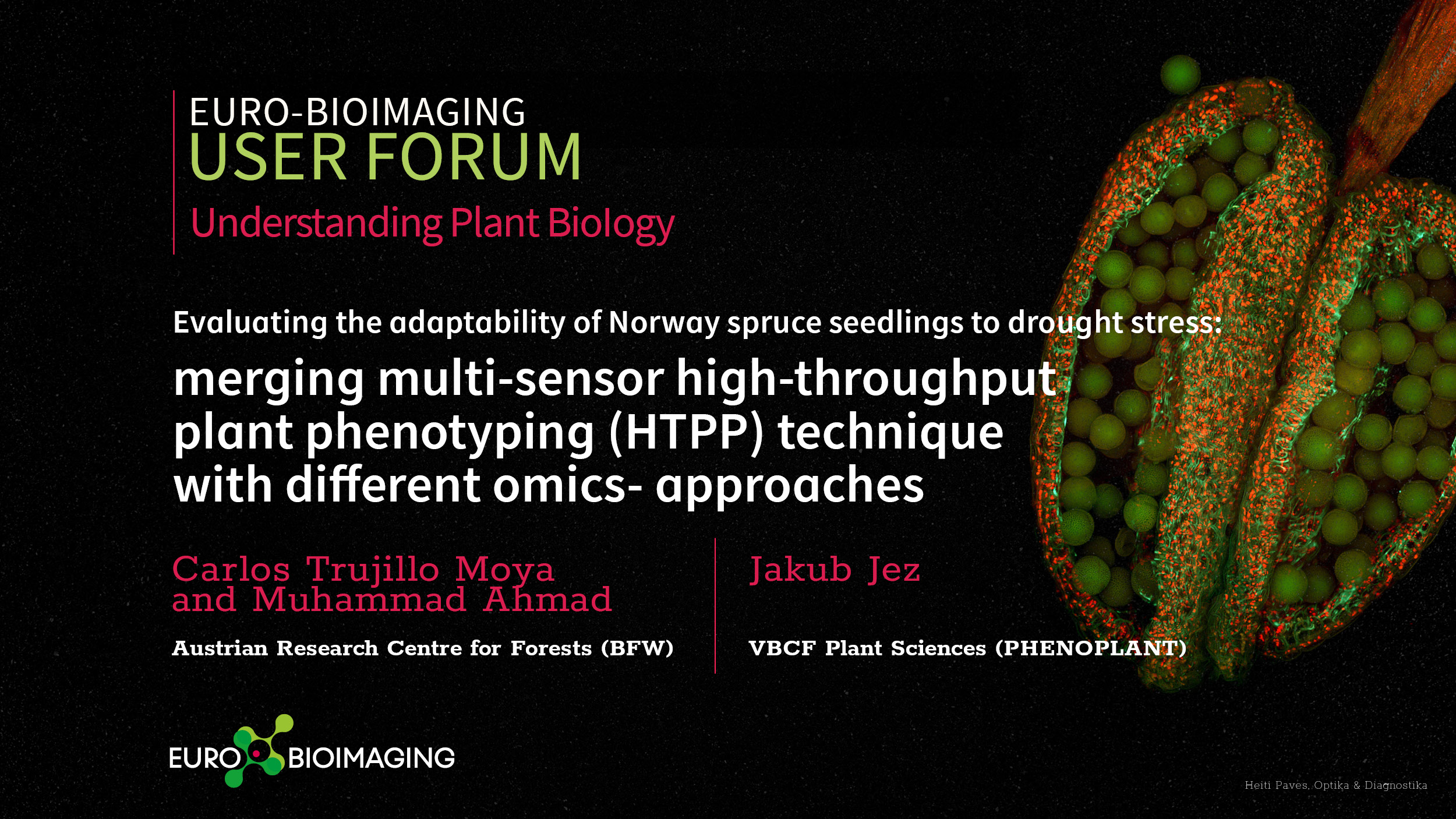
Evaluating the adaptability of Norway spruce seedlings to drought stress
Imaging technologies support research into the structure and function of plants, shed light on plant health, resilience and adaptability, and help answer agroecology-related research questions. The Euro-BioImaging User Forum “Understanding Plant Biology” will showcase how imaging supports cutting edge research in this domain and provide information on funding opportunities for agroecology-related research projects via the AgroServ project. At this event, Carlos Trujillo Moya and Muhammad Ahmad, Austrian Research Centre for Forests (BFW), will explain how they merged multi-sensor high-throughput plant phenotyping (HTPP) technique with different omics- approaches, to evaluate the adaptability of Norway spruce to drought stress. This exciting work was done in collaboration with Jakub Jez, VBCF Plant Sciences (PHENOPLANT), part of our Austrian BioImaging CMI/Node. Full abstract below.
What: Euro-BioImaging User Forum “Understanding Plant Biology”
When: October 12, 2023, from 14:00-17:00 CEST
Where: Online
ABSTRACT
Evaluating the adaptability of Norway spruce seedlings to drought stress: merging multi-sensor high-throughput plant phenotyping (HTPP) technique with different omics- approaches
Carlos Trujillo Moya and Muhammad Ahmad, Austrian Research Centre for Forests (BFW)
Jakub Jez, VBCF Plant Sciences (PHENOPLANT)
Drought stress severely limits the distribution of Norway spruce (Picea abies (L.) H. Karst.). Provenance trials, the commonly used method to assess adaptive variation among populations, are hampered by a limited number of sites, populations, and labour-intensive procedures. This study introduces a new and efficient approach, called multi-sensor high-throughput plant phenotyping (HTPP), to evaluate the drought stress adaptation potential of Norway spruce provenances at the critical seedling stage. Two Norway spruce provenances from different climates were subjected to 21 days of controlled drought stress and monitored using HTPP. The data collected by HTPP allowed the estimation of more than 50 phenotypic traits, allowing the differentiation of early and late drought stress responses between populations. In addition, the phenomic data were linked to needle transcriptomics, metabolomics and stem anatomy. Metabolic changes were observed in both provenances during later stages of drought stress, with each provenance exhibiting a unique metabolic signature under both well-watered and drought-stressed conditions. Further analysis revealed over 4000 differentially expressed genes, most of which were shared between the two populations. However, a small proportion of genes were provenance specific, reflecting the differences observed in the phenomics and metabolomics datasets. Differences in stem anatomy were also identified, with specific stem tissues such as xylem differentially affected in the studied provenances, with potential implications for future wood production. Overall, this study highlights the importance of the HTPP approach and introduces a standardised HTTP protocol for assessing drought stress adaptation in Norway spruce seedlings, with potential applications in other tree species.

More news from Euro-BioImaging


